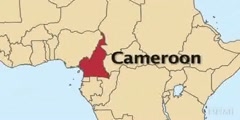Lec 5 - Why Is Africa Different?
"Lec 5 - Why Is Africa Different?" Global Problems of Population Growth (MCDB 150) In addition to cultural controls acting to maximize fertility, there are important, and often competing, interests of individual families to limit fertility. Unwanted births are dealt with by infanticide in many cultures. Additionally, fertility is regularly controlled by limiting marriage within a culture. Another very important factor in population growth, especially in the tropics, is food availability. Heavy rains in the tropics wash nutrients away, leaving deficient soils. Much of Africa is either too dry or too wet. Africa was, until recently, not densely populated. Since land was available and because more children meant more security and power, a culture evolved that emphasized high fertility, justified by the need for descendants to pacify ancestors. Sub-Saharan (tropical) Africa has the highest birth rates in the world. As an example, Niger, just south of the Sahara desert has a fertility rate of almost eight children per woman while, in the Mediterranean zone, Morocco, just north of the Sahara, but also a Sunni Muslim country, has a rate of only 3.3 children per woman. 00:00 - Chapter 1. Review and More on Cultural Controls on Fertility 09:53 - Chapter 2. Individual Level Controls on Fertility 23:28 - Chapter 3. Fertility Control by Controlling Child Bearers 27:53 - Chapter 4. Underpopulation in Africa 36:28 - Chapter 5. Agricultural Productivity in African Tropics 50:43 - Chapter 6. World Agricultural Comparisons 53:34 - Chapter 7. Diseases in Africa and Underpopulation Complete course materials are available at the Open Yale Courses website: http://open.yale.edu/courses This course was recorded in Spring 2009.
Video is embedded from external source so embedding is not available.
Video is embedded from external source so download is not available.
Channels: Others
Tags: Lec 5 - Why Is Africa Different?
Uploaded by: yalepopulatngrth ( Send Message ) on 12-09-2012.
Duration: 71m 19s
Here is the next lecture for this course
Wild Africa; The birds flying over Cape H ...
00:28 | 5060 viewsSouth Africa's Cape highlands
01:18 | 3935 viewsCape Cobra teased by Ground Squirrels in ...
01:51 | 5054 viewsNamib's desert Elephants in Wild Africa
02:35 | 4564 viewsAfrica and HIV Prevention
04:20 | 3120 viewsSymphony of Science - Chapter Of Africa
03:59 | 2345 viewsLec 18 - Hometown Boy: Honoring an Empero ...
01:12:59 | 2680 viewsHIV's origins in Africa
01:10 | 3660 viewsChildren of Africa
03:59 | 3429 viewsPlate Tectonics in Rift Valleys of Africa
02:14 | 7895 viewsAfrica and Europen Imperialism
04:08 | 13211 viewsWild Africa, Sand snake vs lizard
01:08 | 6415 viewsWild Africa; Zimbabwe's Victoria Falls
01:18 | 4495 viewsWhizzKids in South Africa
03:06 | 2790 viewsReturn to Zambia (MWV17)
05:43 | 5091 viewsNo content is added to this lecture.
This video is a part of a lecture series from of Yale
Lecture list for this course
Lec 1 - Evolution of Sex and Reproductive Strategies
Lec 2 - Sex and Violence Among the Apes
Lec 4 - When Humans Were Scarce
Lec 7 - Demographic Transition in Europe; Mortality Decline
Lec 8 - Demographic Transition in Europe; Fertility Decline
Lec 9 - Demographic Transition in Europe
Lec 11 - Low Fertility in Developed Countries (Guest Lecture by Michael Teitelbaum)
Lec 12 - Human and Environmental Impacts
Lec 13 - Fertility Attitudes and Practices
Lec 14 - Demographic Transition in Developing Countries
Lec 16 - Population in Traditional China
Lec 17 - Population in Modern China
Lec 18 - Economic Impact of Population Growth
Lec 19 - Economic Motivations for Fertility
Lec 20 - Teen Sexuality and Teen Pregnancy
Lec 21 - Global Demography of Abortion
















